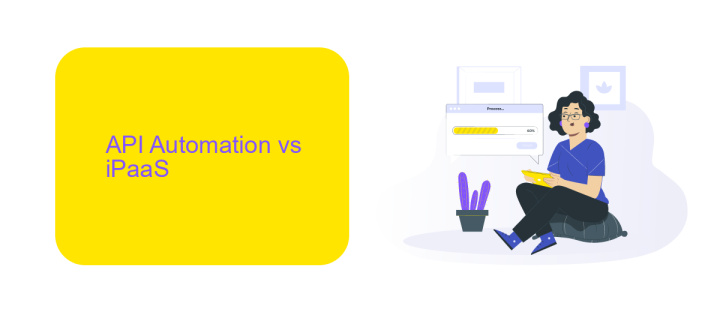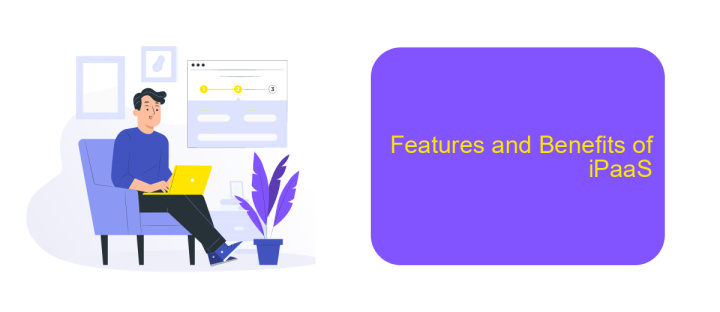API Automation vs iPaaS
In today's rapidly evolving digital landscape, businesses are constantly seeking efficient ways to integrate and automate their processes. API Automation and Integration Platform as a Service (iPaaS) are two prominent solutions that offer distinct advantages. This article delves into the key differences, benefits, and use cases of API Automation versus iPaaS, helping you make an informed decision for your organizational needs.
Introduction
In today's rapidly evolving digital landscape, businesses are increasingly relying on automation to streamline operations and enhance efficiency. Two prominent solutions in this domain are API Automation and iPaaS (Integration Platform as a Service). Both approaches offer unique benefits and can significantly impact how organizations manage their integrations and workflows.
- API Automation: Enables direct communication between different software systems through APIs, allowing for customized and precise integration.
- iPaaS: Provides a unified platform to manage multiple integrations, offering pre-built connectors and a user-friendly interface for seamless coordination.
Choosing between API Automation and iPaaS depends on various factors, including the complexity of the integration, the level of customization required, and the specific needs of the business. For instance, services like ApiX-Drive can simplify the process by offering an intuitive platform to set up and manage integrations without deep technical expertise. Understanding the strengths and limitations of each approach is crucial for making an informed decision that aligns with your organizational goals.
API Automation vs iPaaS

API Automation and iPaaS are two powerful approaches for streamlining business processes and integrating various applications. API Automation focuses on utilizing application programming interfaces (APIs) to automate tasks and workflows, allowing for seamless communication between different software systems. This approach is highly customizable and can be tailored to meet specific business needs, making it ideal for organizations looking to optimize their existing infrastructure and improve efficiency through precise control over their integrations.
On the other hand, iPaaS (Integration Platform as a Service) provides a more user-friendly and scalable solution for managing integrations. Services like ApiX-Drive offer pre-built connectors and intuitive interfaces, enabling businesses to quickly set up and manage integrations without extensive coding knowledge. iPaaS platforms are particularly beneficial for companies that need to integrate multiple cloud-based applications and services, as they offer a centralized hub for monitoring and maintaining these connections. While API Automation offers greater flexibility, iPaaS simplifies the integration process, making it accessible to a broader range of users.
Features and Benefits of API Automation

API Automation offers a streamlined approach to integrating various software systems, allowing for seamless data exchange and operational efficiency. This method reduces manual intervention, minimizes errors, and accelerates workflows, making it an essential tool for modern businesses.
- Efficiency: Automated APIs handle repetitive tasks quickly and accurately, freeing up human resources for more strategic activities.
- Scalability: As business needs grow, API automation can easily scale to accommodate increased data volumes and complexity.
- Consistency: Automation ensures uniform data handling, reducing discrepancies and maintaining data integrity across systems.
- Cost Savings: By reducing the need for manual labor and minimizing errors, businesses can achieve significant cost reductions.
- Enhanced Integration: Platforms like ApiX-Drive simplify the integration process, enabling businesses to connect various applications effortlessly.
Overall, API Automation is a vital component for businesses aiming to enhance their operational efficiency and data management capabilities. By leveraging tools like ApiX-Drive, companies can achieve seamless integration, ensuring that their systems work harmoniously together to support their growth and success.
Features and Benefits of iPaaS

Integration Platform as a Service (iPaaS) offers a comprehensive solution for businesses looking to streamline their operations through seamless integration of various applications and data sources. By leveraging iPaaS, companies can automate workflows, reduce manual tasks, and enhance overall productivity.
One of the standout features of iPaaS is its ability to connect disparate systems without the need for extensive coding. This democratizes the integration process, allowing non-technical users to set up and manage integrations effectively. Platforms like ApiX-Drive exemplify how iPaaS can simplify the integration process, offering user-friendly interfaces and pre-built connectors.
- Scalability: Easily scale integrations as your business grows.
- Cost Efficiency: Reduce costs associated with manual integration efforts.
- Flexibility: Adapt to changing business needs with minimal disruptions.
- Data Consistency: Ensure data is synchronized across all systems in real-time.
- Enhanced Security: Benefit from robust security measures and compliance standards.
By adopting iPaaS solutions like ApiX-Drive, businesses can focus on their core activities while ensuring their systems work harmoniously. This not only saves time and resources but also provides a competitive edge in today's fast-paced digital landscape.
Choosing the Right Solution for Your Needs
When deciding between API automation and iPaaS, it's crucial to evaluate your specific needs and technical capabilities. API automation provides granular control and customization, ideal for businesses with complex workflows and technical expertise. It allows for tailored integrations and precise data handling, but requires significant development resources and maintenance. On the other hand, iPaaS solutions like ApiX-Drive offer user-friendly interfaces and pre-built connectors, making them suitable for organizations seeking quick deployment and ease of use without extensive coding knowledge.
Consider the scale and complexity of your integration requirements. If your organization demands highly customized and scalable solutions, API automation might be the better choice. However, for businesses looking to streamline operations with minimal technical overhead, iPaaS platforms such as ApiX-Drive can provide efficient and cost-effective integration capabilities. Ultimately, the right solution will align with your business goals, technical resources, and desired level of control over your integrations.
- Automate the work of an online store or landing
- Empower through integration
- Don't spend money on programmers and integrators
- Save time by automating routine tasks
FAQ
What is the main difference between API Automation and iPaaS?
Which solution is better for non-technical users, API Automation or iPaaS?
Can API Automation and iPaaS be used together?
How do I choose between API Automation and iPaaS for my business?
What are some common use cases for API Automation and iPaaS?
Strive to take your business to the next level, achieve your goals faster and more efficiently? Apix-Drive is your reliable assistant for these tasks. An online service and application connector will help you automate key business processes and get rid of the routine. You and your employees will free up time for important core tasks. Try Apix-Drive features for free to see the effectiveness of the online connector for yourself.


